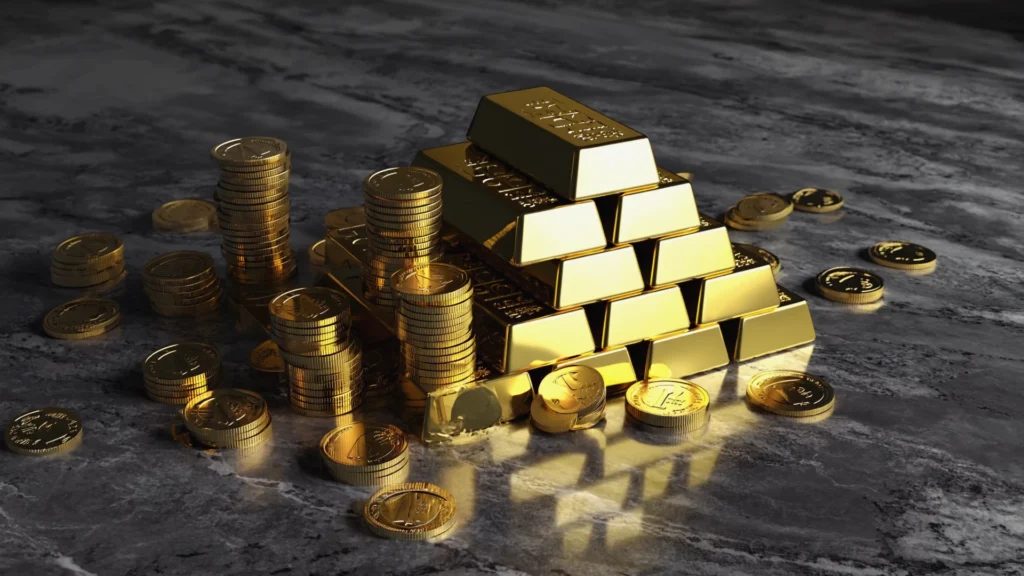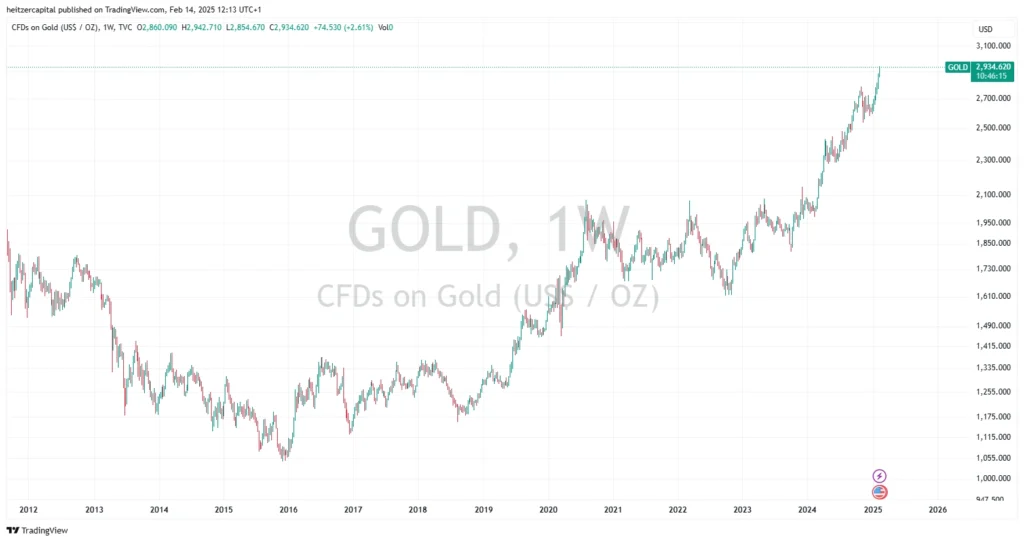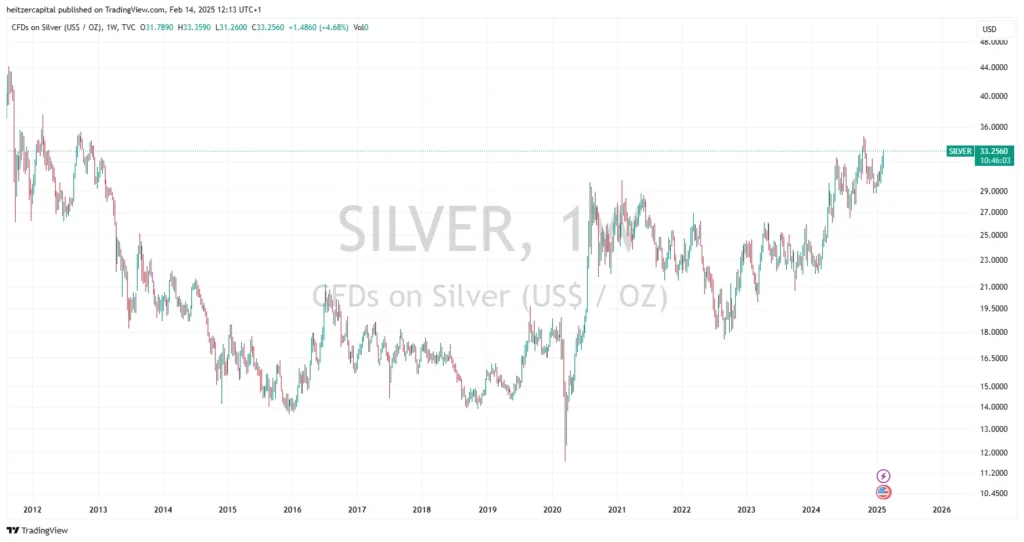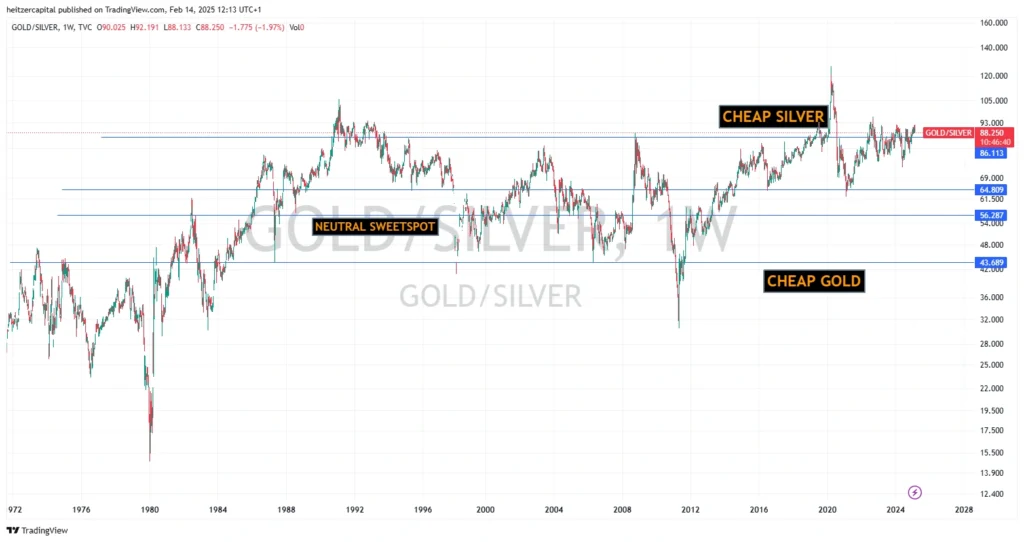Investing in Gold and Silver: Which Is the Better Investment for 2025?
Precious metals offer a time-tested solution. But when it comes to investing in gold and silver in 2025, understanding their unique behaviors and strategic value in a modern portfolio is essential.

📘 Download the full guide: Stackers Handbook — A +100-page expert resource on gold and silver.
Should I Invest in Gold or Silver? The Pros & Cons
Gold and silver investing has been a wealth-building strategy for centuries. But when it comes to 2025, should you invest in gold or silver? Both have strengths, but their market behavior differs. This guide breaks down the gold vs silver investment pros and cons, including volatility, inflation protection, and the gold-silver ratio strategy used by smart investors.
Gold Investment: Pros & Cons

✅ Pros of Investing in Gold:
- Strong hedge against inflation – Gold has historically maintained its value during economic crises.
- Lower volatility – Less price fluctuation compared to silver, making it a stable store of value.
- High liquidity – Gold is easily bought and sold worldwide.
- Central banks hold it – Governments back gold as a key financial reserve, reinforcing trust.
- Less industrial demand dependency – Unlike silver, gold’s value isn’t tied to manufacturing trends.
❌ Cons of Investing in Gold:
- Higher cost of entry – Gold is expensive per ounce, making it less accessible for small investors.
- Slower price movements – Gold doesn’t spike as dramatically as silver in bull markets.
- Less potential for explosive gains – While stable, gold doesn’t see the same speculative rallies as silver.
Silver Investment: Pros & Cons

✅ Pros of Investing in Silver:
- Cheaper entry point – You can own more silver for the same money compared to gold.
- Higher upside potential – Silver tends to have sharper rallies in bullish markets.
- Industrial demand support – Used in electronics, solar panels, and medical tech, which drives value.
- Gold-silver ratio opportunities – Smart investors trade between the two metals when the ratio is favorable.
❌ Cons of Investing in Silver:
- More volatile than gold – Prices swing significantly, which can be stressful for investors.
- Bulkier storage – Requires more physical space for the same dollar amount invested.
- More industrial reliance – Economic slowdowns can hurt silver demand.
Strategy for Investing in Gold and Silver in 2025

1. Understanding the Gold-Silver Ratio
The gold-silver ratio compares how many ounces of silver are needed to buy one ounce of gold. Historically, this ratio has ranged from 10:1 to 100:1, offering strategic buying opportunities.
- Above 80: Silver is undervalued relative to gold – a buying opportunity.
- Below 50: Silver is overvalued – might be time to trade for gold.
2. When to Buy Gold vs Silver
- Buy gold when: Inflation rises, stock markets crash, and recession fears increase.
- Buy silver when: Industrial demand spikes, economic growth is strong, and the gold-silver ratio is high.
Gold-Silver Ratio: How to Trade It for Maximum Gains
One of the best-kept secrets of precious metal investors is cycling between gold and silver based on the gold-silver ratio. Instead of selling for cash, you trade between metals to accumulate more ounces over time.
Example Trade:
- If the gold-silver ratio hits 90:1, swap gold for silver to maximize holdings.
- If the ratio drops to 50:1, convert silver back to gold for stability.
This strategy allows investors to stack more metal without ever selling into fiat currency, keeping wealth secure.
How to Invest in Gold and Silver: ETFs, Physical, or Mining Stocks?
Not all gold and silver investments are created equal. Here are the main vehicles investors can use:
- Physical Metals: Bars, rounds, and coins offer direct ownership. They’re ideal for those who value security and privacy, but keep in mind:
- Storage costs and insurance can add up.
- You’ll often pay premiums over the spot price, especially for coins like American Eagles or Maple Leafs.
- Exchange-Traded Funds (ETFs): For investors seeking simplicity, ETFs like GLD (gold) and SLV (silver) offer exposure without needing to store physical metal. However:
- Some ETFs are taxed as collectibles, meaning gains may be subject to higher capital gains rates in the U.S.
- You don’t actually own the metal—you own shares representing it.
- Mining Stocks and Funds: These are more volatile and offer leverage to metal prices. You’re betting on management, geology, and market conditions—not just metal value.
- IRA or Brokerage Accounts: Many U.S. investors use precious metals within self-directed IRAs or through regular brokerage accounts. IRA-approved gold and silver must meet specific purity standards and be stored by a qualified custodian.
Diversification and Correlation to Other Assets
Gold and silver investing can help diversify your portfolio. Historically:
- Gold has shown low correlation to equities, making it a strong diversifier and potential hedge during market downturns.
- Silver tends to be moderately correlated to stocks and industrial activity, due to its usage in manufacturing and tech.
Final Verdict: Should You Invest in Gold or Silver?
If you prefer stability, low volatility, and a hedge against inflation, gold is the better choice. But if you want higher upside potential and are comfortable with market swings, silver offers better opportunities.
For smart investors, combining both metals and using the gold-silver ratio strategy is the best way to maximize returns in 2025.
Frequently Asked Questions About Investing in Gold and Silver
Is gold or silver the better investment for 2025?
If you’re investing in gold and silver in 2025, gold offers more long-term stability, while silver may outperform during industrial growth cycles due to its volatility and dual demand.
What is the gold-silver ratio and how does it affect investing?
When investing in gold and silver, the gold-silver ratio helps you identify undervalued opportunities by comparing how many ounces of silver it takes to buy one ounce of gold.
Is silver riskier than gold for new investors?
Yes. When investing in silver, expect higher volatility. Gold tends to be steadier and is often preferred by conservative investors looking for a reliable hedge.
What are the best ways to start investing in gold and silver?
You can start investing in gold and silver through physical bullion, ETFs like GLD and SLV, mining stocks, or even self-directed IRAs. Each method has different risks, costs, and benefits.
How are gold and silver ETFs taxed in the U.S.?
Gold and silver ETFs are often taxed as collectibles, with gains subject to a higher capital gains tax rate. Know this before investing in gold and silver through an ETF.
Can I invest in gold or silver through an IRA?
Yes. Many self-directed IRAs support investing in gold and silver, as long as the metals meet IRS purity standards and are stored by an approved custodian.
How do premiums affect physical gold and silver investing?
When investing in gold and silver physically, expect to pay premiums above spot prices—especially on coins like American Eagles or Maple Leafs. Always compare premium levels before buying.
Should I sell my metals for cash or trade between gold and silver?
Rather than selling into fiat, many investors rotate between gold and silver using the ratio to grow total ounces. This is a key strategy in long-term precious metal investing.
Useful Resources:
- Check Real-Time Gold & Silver Prices in Kitco (Link to Kitco for live gold & silver prices)
- Watch Gold and Silver’s Daily Insights in Our YouTube Channel (HTZCAP)
What’s Next?
If you’re serious about gold and silver investing, check out The Stacker’s Handbook, a complete guide to mastering the gold-silver ratio strategy and growing your metal holdings.
👉 Get the Gold and Silver Ratio Ebook Here
And if you’re already started on your stacking journey, get your Stacker’s Print On Demand Gear here.

